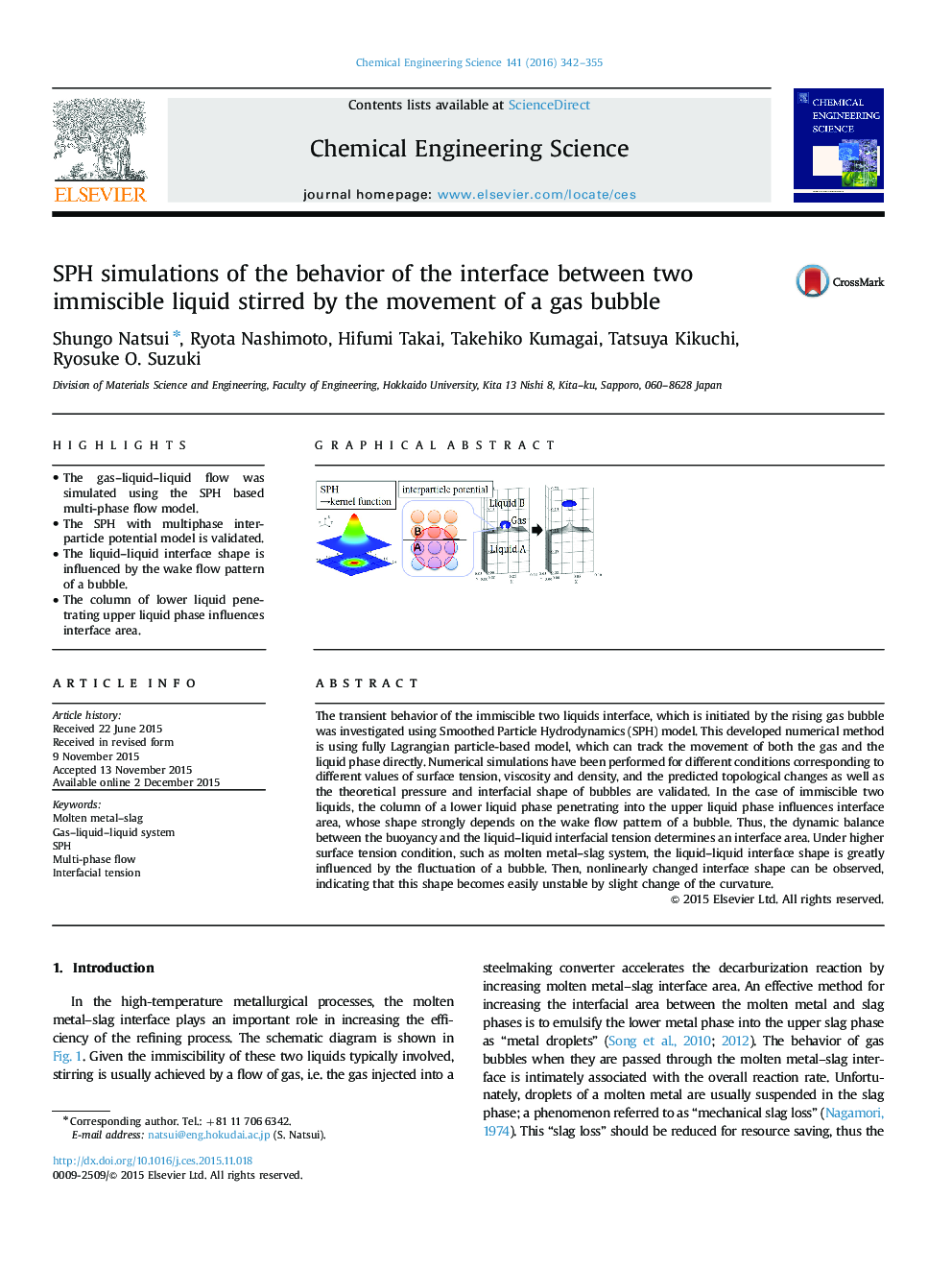| Article ID | Journal | Published Year | Pages | File Type |
|---|---|---|---|---|
| 154466 | Chemical Engineering Science | 2016 | 14 Pages |
•The gas–liquid–liquid flow was simulated using the SPH based multi-phase flow model.•The SPH with multiphase interparticle potential model is validated.•The liquid–liquid interface shape is influenced by the wake flow pattern of a bubble.•The column of lower liquid penetrating upper liquid phase influences interface area.
The transient behavior of the immiscible two liquids interface, which is initiated by the rising gas bubble was investigated using Smoothed Particle Hydrodynamics (SPH) model. This developed numerical method is using fully Lagrangian particle-based model, which can track the movement of both the gas and the liquid phase directly. Numerical simulations have been performed for different conditions corresponding to different values of surface tension, viscosity and density, and the predicted topological changes as well as the theoretical pressure and interfacial shape of bubbles are validated. In the case of immiscible two liquids, the column of a lower liquid phase penetrating into the upper liquid phase influences interface area, whose shape strongly depends on the wake flow pattern of a bubble. Thus, the dynamic balance between the buoyancy and the liquid–liquid interfacial tension determines an interface area. Under higher surface tension condition, such as molten metal–slag system, the liquid–liquid interface shape is greatly influenced by the fluctuation of a bubble. Then, nonlinearly changed interface shape can be observed, indicating that this shape becomes easily unstable by slight change of the curvature.
Graphical abstractFigure optionsDownload full-size imageDownload high-quality image (325 K)Download as PowerPoint slide
